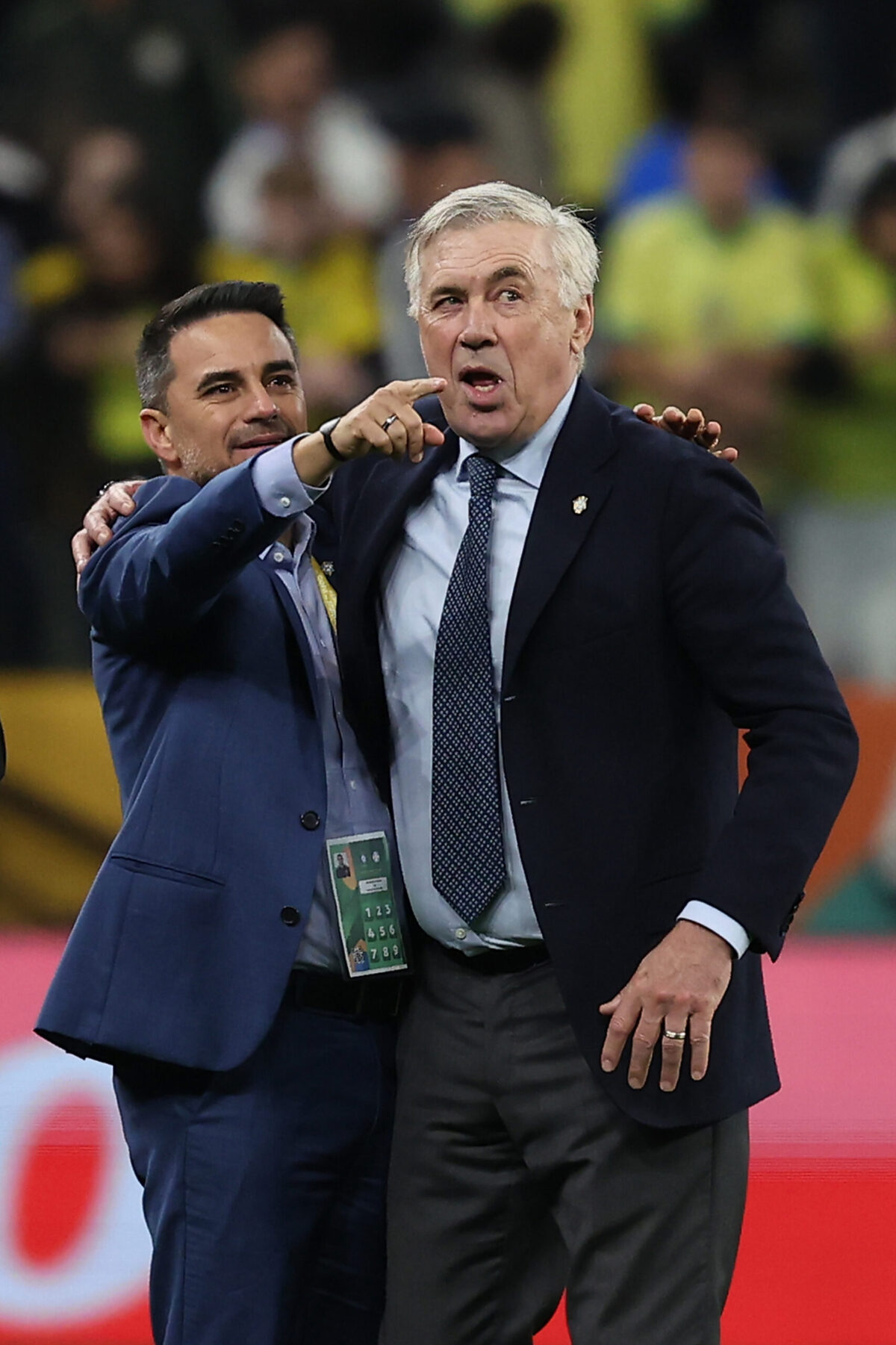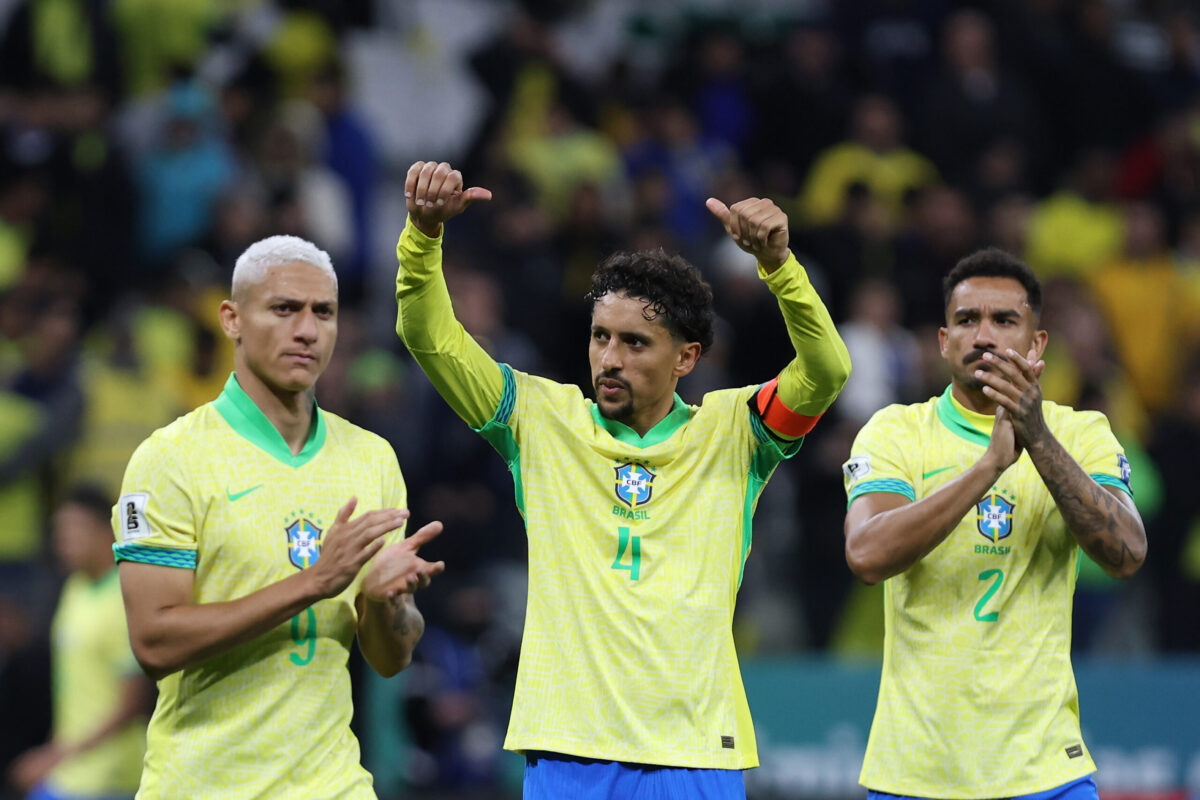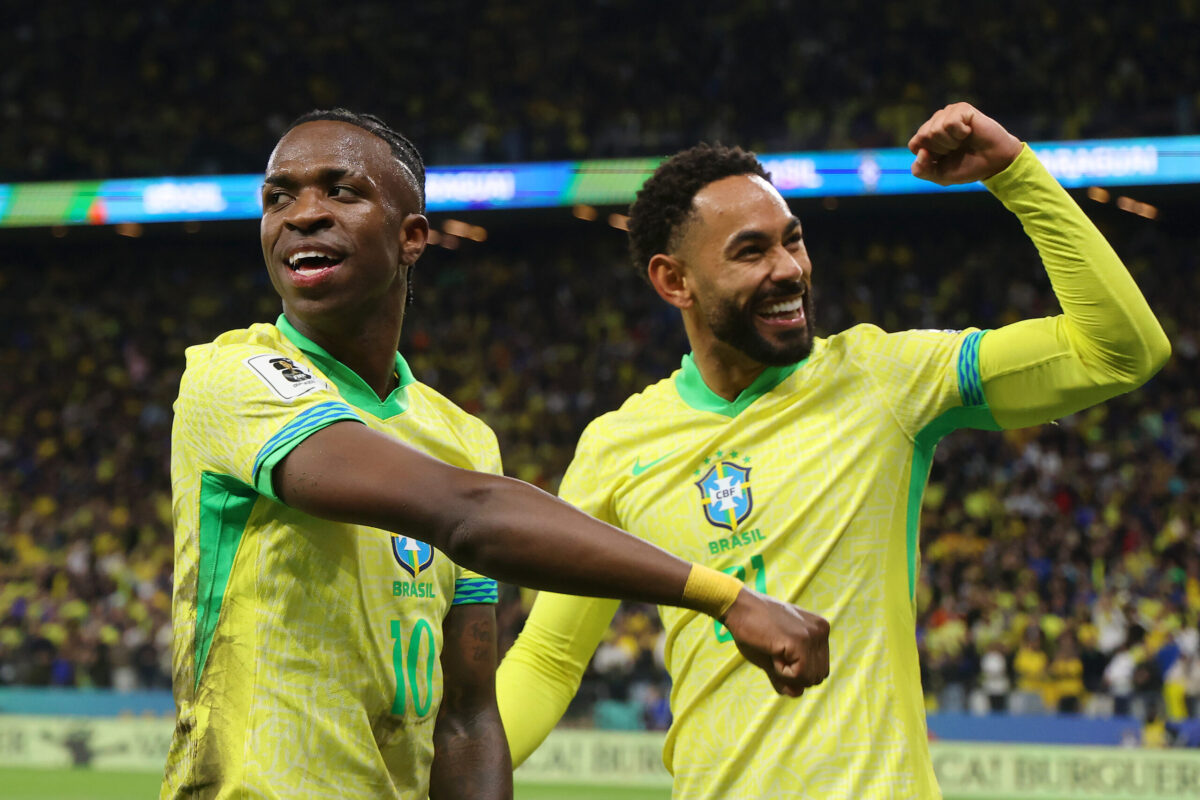The legendary Italian coach is bringing order, discipline, and quiet confidence to a Brazil side that has recently struggled to live up to its rich history. With his first two matches under his belt, Carlo Ancelotti isn’t just adjusting to South American football — he’s laying the foundation for a more balanced and battle-ready Brazil. We revisit Brazil’s first steps under Ancelotti with tactical analyst and YouTuber Filippo Silva, aka Tactical Manager.
Carlo Ancelotti’s debut as Brazil’s manager was anything but smooth sailing. Facing Ecuador in the hostile setting of Guayaquil, Ancelotti went with a 4-3-3 setup. The result? A hard-fought 0-0 draw that showed just how challenging CONMEBOL qualifiers can be, especially for a coach still learning the rhythms of South American football. With limited time to implement his ideas, there were few takeaways beyond the grit and shape the squad displayed.
Still, there were signs of Ancelotti’s intentions. The return of Casemiro after a two-year absence brought stability to the midfield. Alisson, Marquinhos, Vinícius Júnior, and Richarlison — key figures Ancelotti has worked with or played against in Europe — formed the spine of this early iteration of his Brazil. The familiarity clearly helps as the new coach tries to mold a team that blends talent with structure.
Brazil’s second game, a home fixture against Paraguay, offered a clearer look at the direction Ancelotti wants to take. Brazil was dominant throughout, outshooting Paraguay 11-5 and controlling 75% of possession. The lineup was more fluid, with Gabriel Martinelli and Raphinha added to inject pace and unpredictability. It was a slim 1-0 win, but one that sealed World Cup qualification and gave Ancelotti his first taste of victory in yellow and green.
“I’m very happy with today’s result,” said Vinicius, who scored the winner, after the match. “We needed to win at home for our fans too and qualify for the World Cup, which was our goal.
“Now [Ancelotti] will have more time to work, to see what he can improve. Today wasn’t one of our best games, but the important thing in qualifying is to win and prepare well for the World Cup.”
A Much-Needed Tactical Shift
According to Filippo Silva, better known under his moniker Tactical Manager, what stood out in Ancelotti’s early games wasn’t flair, it was focus.
“I liked the fact that the team had a much better defense, more defensive solidity,” Silva said. “The team was not defending well under Dorival Júnior. In these two games Brazil was very solid with Marquinhos and Alexsandro Ribeiro as the center backs, and the return of Casemiro helps. This was the first window where Brazil got two clean sheets.”
That stability is no accident. Ancelotti is known for simplifying roles and making teams harder to beat. For a Brazil side that has too often looked disjointed and chaotic in recent years, his steady hand could be exactly what it needs.
“Brazil played much more like a team,” Silva added. “It wasn’t pretty, both were tough opponents as Paraguay was undefeated for various games and Ecuador barely concedes goals. Brazil finally functioned as a team.”
Breaking the Taboo: A Foreign Fix for a Local Problem

Ancelotti’s hiring represents a break from tradition. Brazil may have a lot of playing talent but their coaching at the professional level, locally, has fallen behind considerably. Clubs cycle through managers at a frantic pace, rarely giving anyone time to build a real project. Many of the best-performing coaches in Brazil’s domestic leagues — like Abel Ferreira and Leonardo Jardim — aren’t even Brazilian.
Ferreira has been the best coach in the country for the last five years with Palmieras. The Portuguese manager has won 10 titles including two Copa Libertadores.
Newcomer Leonardo Jardim, also from Portugal, has his Cruzeiro side tied for first place, but Brazilian soccer isn’t a place for long term plans and it’s not a stretch to see a head coach having over 10 jobs in less than 15 years. It has also become a carousel of coaches jumping and being fired from club to club, which has hurt the head coaching ranks in Brazil heavily as few coaches ever have time to fully flesh out their identities.
Enter Ancelotti, a man who not only brings elite-level experience but also has worked directly with Brazil’s top stars at the club level. That deep familiarity is a major advantage. Unlike coaches unfamiliar with Brazil’s player pool or culture, Ancelotti steps in already knowing how to manage egos, build trust, and get the most out of players like Vinícius Júnior and Casemiro.
For a national team drowning in short-term fixes and tactical confusion, Ancelotti offers clarity. His approach isn’t about flashy innovation, it’s about building a team that understands its roles, plays to its strengths, and competes with purpose. If Brazil wants to reclaim its spot among the world’s elite, it needs more than talent — it needs direction.
Reclaiming the Spirit of Jogo Bonito, the Right Way

The romantic ideal of Brazil’s jogo bonito may be fading, but Ancelotti could help revive it, and not in the way many expect. Brazilian players now leave for Europe younger than ever, learning to operate in rigid, tactical systems. The iconic flair remains, but it’s been shaped by the demands of modern football.
Ancelotti has a history of creating balanced teams that both entertain and win. His Milan sides were masterclasses in harmony, and his Real Madrid squads have always been deadly efficient without sacrificing flair. That’s the blueprint Brazil needs. A team that can be disciplined without being dull. Creative without being chaotic.
Above all, Ancelotti knows when to loosen the reins and when to tighten them. In a football culture often torn between freedom and function, he might be the rare coach who can offer both.
Looking Ahead: A New Core Takes Shape

With World Cup qualification secured, attention turns to squad building. Silva sees several players already rising in Ancelotti’s estimation.
“Alexsandro Ribeiro, his stock went up, he could be a starter on the national team,” Silva said. “Matheus Cunha I thought he played very well… and for what it’s worth, Vinícius Júnior, he wasn’t outstanding, but we started to see a little bit of a better version of him. If he can consistently play well like he did against Paraguay, he can become ‘the man’ for the national team.”
Vinícius Júnior: Unlocking the Superstar
There may be no player more vital to Ancelotti’s Brazil than Vinícius Júnior. The 24-year-old has dazzled at Real Madrid, but his national team numbers — just seven goals in 41 caps — still fall short. Vini also famously struggled in his first few years in Madrid, but took off once Ancelotti returned to the club in 2021. If anyone can help the prodigious winger bridge the gap between his play for club and country, it’s the man who helped turn him into one of the world’s deadliest players.
Vinícius thrives on space, chaos, and one-on-one battles. He brings energy, unpredictability, and now, thanks to Ancelotti, more polish and consistency.
He’s already out of the gates strong under Ancelotti with one goal in two games — a small but meaningful step.
While some purists may grumble about a foreign coach leading Brazil, even the most die-hard traditionalists can’t deny that the team needed help. And it’s getting it from one of the most respected winners in football history.
Ancelotti may not sip caipirinhas or dance samba, but he understands something that Brazil desperately needs: how to win with style, but never at the cost of structure.








